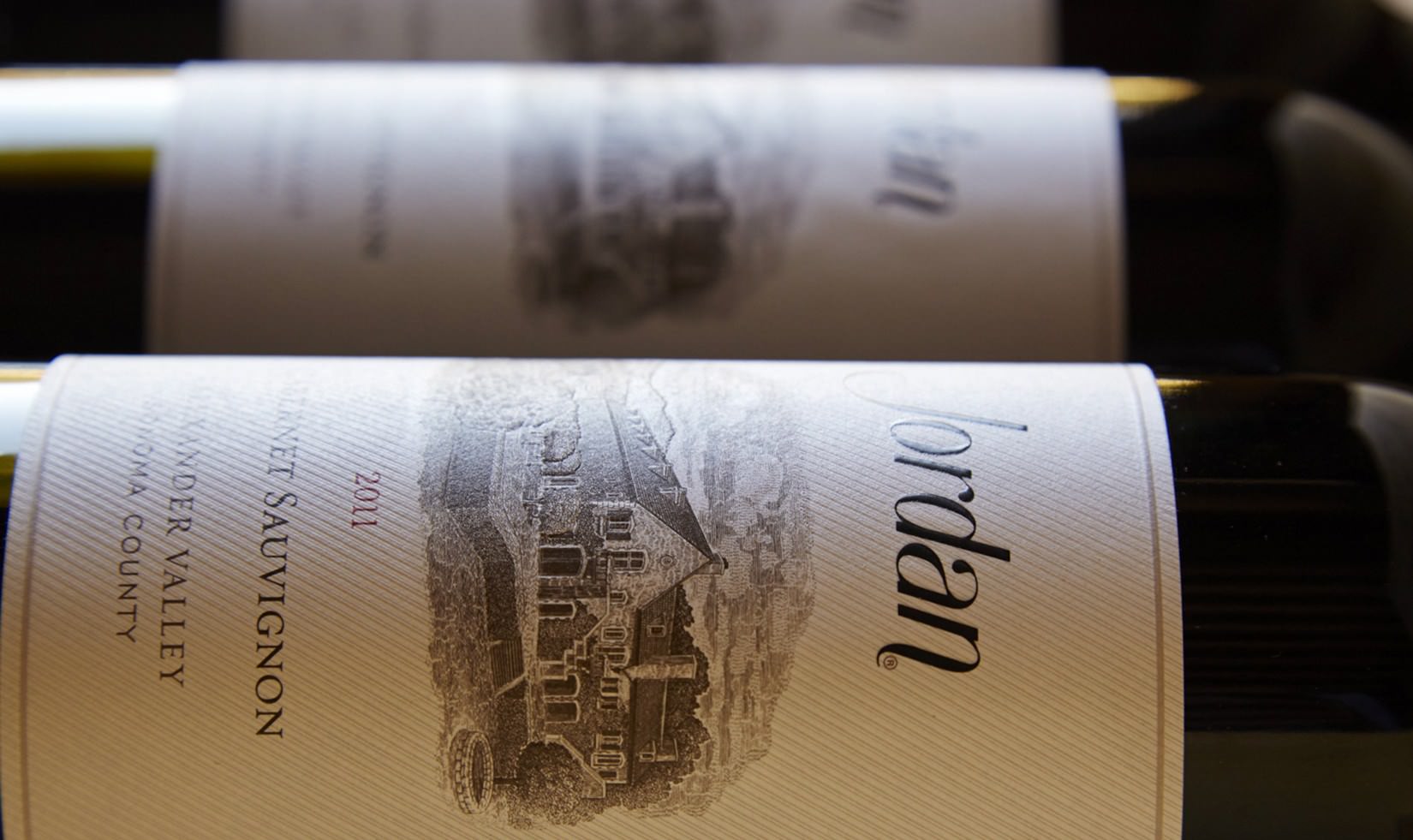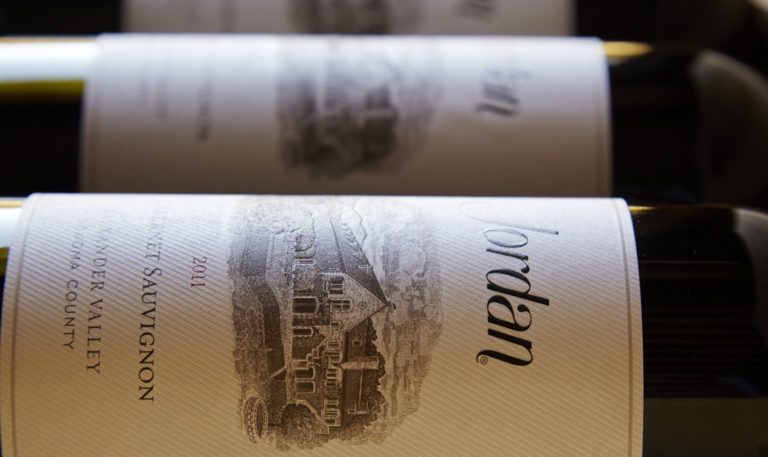Walking the fine line between change and tradition has become commonplace at Jordan. We’re always trying to improve upon our crafts, but change for change’s sake should never be an end in itself. The pursuit of excellence requires a willingness to explore and experiment; however, too much change and the proverbial wheels would come off.
It is this balance that made our recent wine label design revamp project such a significant undertaking. In 2011, Sonoma County passed a conjunctive labeling law, requiring all wineries to list the county of origin on their wine labels by 2014. In 2010, we decided to invest in a new, state-of-the-art bottling line that would demonstrably improve the quality of our wines but no longer supported the glue-backed wine label placed on our bottles since the 1970s. We elected to view these events as an opportunity.
We began by lining up every label of Jordan Alexander Valley Cabernet Sauvignon since the inaugural 1976 vintage. The original vision for the label was inspired by the finest Bordeaux labels and printed with an intricate steel-engraving technique called intaglio that imparted a texture similar to that of money. Although the labels underwent several small changes over the years, the cumulative effect of those changes was dramatic when a bottle of 2010 Cabernet stood next to that of a 1976. (Scroll through the label library on our trade site and see the transformation.) Jordan Cabernet Sauvignon labels had become nearly an inch and a half smaller over time, and their colors had changed as well. 1980 was the last vintage with a message from a Jordan family member on the back label, and 1993 was the last vintage of Jordan Cabernet Sauvignon with a taller front label.
Selecting a taller front label sitting higher on the bottle resulted in aesthetic balance. A message from John on the back label describing the Jordan philosophy and style of the carefully crafted wine inside brought our project full circle. Once we decided on the Cabernet Sauvignon label, the Chardonnay fell quickly into place.
The last decision to make before signing off on the design involved the alcohol percentage printed on the label. Both labels had listed an alcohol of 13.5% since 2000. The government requires alcohol percentages to be printed on wine labels but allows a “tolerance” range of plus or minus 1.5% of the precise alcohol amount for wines below 14%. Because there has been much discussion amongst the wine media about the accuracy of alcohol percentages on wine labels, Jordan–a producer of balanced wines that have always been below 14% alcohol–has decided to include an even more accurate percentage on our new labels: Cabernet Sauvignon at 13.8% and Chardonnay at 13.7%. We realize 0.3 or 0.2% isn’t noticeable, but the transparency is important to us and to our customers who seek elegant, lower-alcohol wines that pair well with food.
The next step was developing a strong partnership between our designers at CF Napa and a printer utilizing the most innovative techniques in label production. By moving our printing from American Bank Note in Tennessee to CCL Label in Sonoma, print quality and processes were improved. Label application transitioned from glue-backed to pressure-sensitive for better adhesion to the bottle. A new type of paper was selected that could withstand long periods of chilling in ice buckets. We were also able to use more eco-friendly inks and printing techniques, incorporating fine embossing that preserved the rich texture of the original design. We achieved the same level of detail and quality as steel engraving and felt fortunate to be working with suppliers that cared as much as we did about making the best label possible.
In 2013, the first box of new labels arrived at the winery. No longer was it necessary to hand sort labels, as quality control could be completed digitally with even the slightest imperfection being instantly detected. We carefully placed the first roll of labels in the new labeler and watched the first bottles make their way down the line. We held our collective breath but the labels went on smoothly. It was truly a “back to the future” moment for all of us.
Now, after proper bottle aging, we are proud to release the new look and feel of the Jordan label. The 2011 Jordan Cabernet Sauvignon and 2013 Jordan Chardonnay both debut April 1, 2015. Tell us what you think.



